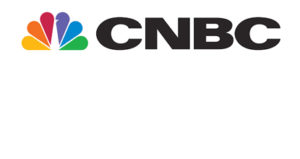
By Annika Kim Constantino
July 28, 2022
Mark Cuban’s new online pharmacy promises steep discounts on hundreds of prescription drugs, and for the most part, it’s delivering.
The problem, experts say, is where it’s still falling short.
Cost Plus Drugs, which launched in January, offers more than 800 generic drugs that treat common diseases like cancer, dementia and leukemia, among others at far lower prices than most retail pharmacies. Imatinib, a leukemia medication with a retail price of more than $2,500, is just $14.40 at Cost Plus Drugs. That price is for everyone, regardless of whether you have health insurance.
The venture aims to combat America’s skyrocketing prescription drug prices: An estimated 18 million Americans, or 7% of U.S. adults, couldn’t pay for at least one drug prescribed by their doctor, according to a 2021 poll from Gallup and West Health.
In an ideal world, Cuban’s pharmacy would shake up the entire pharmaceutical industry and drive down the costs of all drugs across the U.S. But experts say that Cost Plus Drugs’ impact is limited, at least for now, because it hasn’t broken into the market driving those exorbitant prices: brand-name drugs.
“As much as I support the venture, what they’re doing does not address the big elephant in the room,” Gabriel Levitt, president of consumer advocate company PharmacyChecker, tells CNBC Make It. “It’s really brand-name drugs that are increasing in price every year and forcing millions of Americans to cut back on medications or not take them at all.”
Here’s where Cuban’s cost-cutting pharmacy is working so far, and why experts say it’s not yet a solution to America’s prescription drug price crisis:
How Cost Plus Drug’s model works
When a drugmaker creates a new formula, it secures a patent that prevents other companies from producing or selling it. Those patents generally last for 20 years, and when they run out, other companies can start making generic versions of the brand-name drug.
Cuban’s pharmacy currently focuses on lowering the costs of those generic drugs by side-stepping people known as “pharmacy benefit managers,” says Dr. José Pagán, chair of the department of public health policy and management at New York University.
Pharmacy benefit managers are essentially middlemen who negotiate with drug manufacturers on behalf of health insurers, large employers and others that contract them. Pagán says they’re often criticized for upping the prices of inexpensive drugs to maximize profits, even when their job is to negotiate discounts or rebates.
Instead of negotiating prices through those pharmacy benefit managers, Cost Plus Drugs directly negotiates with manufacturers to get generic drugs at wholesale prices. It then sells those drugs to consumers with prescriptions with a 15% markup, a $3 pharmacy labor charge and $5 for shipping, according to the pharmacy’s website.
The trade-off: Cost Plus Drugs doesn’t accept insurance claims, since insurers don’t typically work with pharmacies that avoid pharmacy benefit managers.
Why brand-name drugs are such a hurdle
Drug patents don’t just give companies exclusive selling rights. They allow manufacturers to sell the drugs at whatever price they want.
Brand-name drugs make up a much smaller share of prescriptions than generic drugs, yet they accounted for nearly 80% of prescription drug expenditures in 2018. Generic drugs end up around 80% to 85% less expensive than their brand-name equivalents, according to the U.S. Food and Drug Administration.
Drugmakers usually only accept less money for their brand-name drugs when they offer rebates to those pharmacy benefit managers, says Inma Hernandez, an associate professor at UC San Diego’s Skaggs School of Pharmacy and Pharmaceutical Sciences.
The middlemen then put the drugs on a formulary — essentially, an insurance plan’s list of preferred medications — which increases the chances that patients will be prescribed those drugs. When patients purchase those medications at full price, the rebate goes to the middlemen, who share their earnings with the insurance companies that contracted them, Hernandez says.
Patients do eventually see an indirect benefit, Hernandez adds: lower insurance premiums. For her, the problem is that pharmacy benefit managers aren’t often transparent about their rebates. “Only the [pharmacy benefit manager] knows how much of the discount really gets passed onto insurers, and then onto patients,” she says.
Pharmacies don’t — and can’t — offer formularies. That gives drugmakers little-to-no incentive to offer rebates to Cost Plus Drugs, Hernandez notes.
